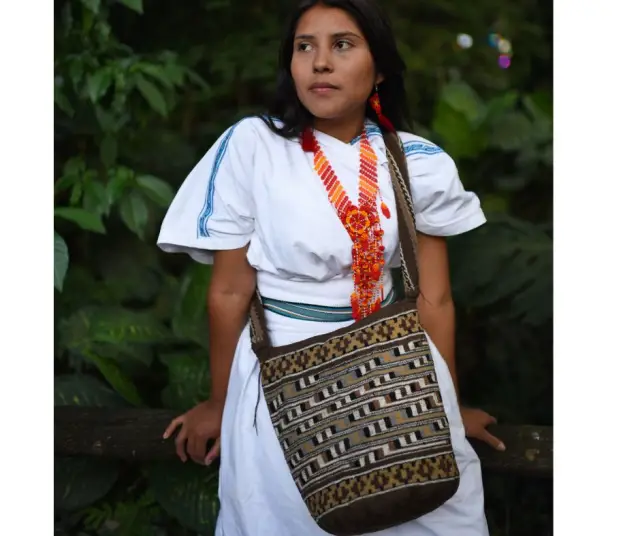Colombia, a nation rich in cultural diversity, is home to a wide range of indigenous ethnic groups that have left an indelible mark on the country's history and social fabric. Since time immemorial, these communities have inhabited the various regions of Colombia, preserving their unique traditions, languages and worldviews. In this extensive territory, there are more than 80 indigenous ethnic groups, each with its own history, culture and ways of life.
Historical Roots
The historical roots of the indigenous ethnic groups of Colombia are submerged in the abysses of time, dating back to millennia before the arrival of European colonizers in the 16th century. These communities, located in the most diverse corners of Colombian territory, not only populated these lands since time immemorial, but also built sophisticated civilizations, marked by a deep respect for nature and an intricate cultural network.
The vestiges of these ancient civilizations are manifested through imposing monuments, such as the majestic ruins of Ciudad Perdida, in the Sierra Nevada de Santa Marta, or the complex systems of terraces and paths of the ancient Muisca in the Cundiboyacense plateau. These archaeological treasures are silent witnesses to the greatness and complexity of the indigenous cultures that flourished in what is now Colombia.
However, beyond the stone structures and ancestral artifacts, the historical roots of indigenous ethnic groups are intertwined with legends and myths passed down from generation to generation. These oral narratives, loaded with ancestral wisdom, reveal the deep bond of these communities with the land, the cosmos and the living beings that surround them. They are stories that tell of the creation of the world, of heroes and heroines who defied the gods, and of the wisdom of the elders who guide the path of future generations.
Geographical distribution
Colombia's geography is as diverse as its indigenous population. From the Amazon rainforests to the peaks of the Andes and the coasts of the Caribbean and Pacific, each region is home to indigenous communities with unique adaptations to the natural environment. For example, in the Amazon region there are groups such as the Tikuna, Huitoto and Cubeo, who have maintained a close relationship with the jungle and its resources for centuries.
In the Andean region, indigenous peoples such as the Kogi, the Arhuaco and the Pasto have preserved their ancestral traditions in the mountains, while on the Caribbean coast there are communities such as the Wayúu, the Kuna and the Emberá, who have developed distinctive cultures. influenced by the sea and commerce.
Cultural diversity
The cultural diversity of Colombia's indigenous ethnic groups is astonishing. Each ethnic group has its own language, worldview, social organization, religious beliefs, art, music and dance. For example, the Emberá are known for their basketry craftsmanship and elaborate healing rituals, while the Nasa are recognized for their historical resistance and their fight for land and autonomy.
Challenges
Despite their cultural wealth, Colombia's indigenous ethnic groups face numerous challenges today. Deforestation, illegal mining, armed violence, discrimination and the loss of ancestral lands are just some of the problems that threaten their survival and well-being. Lack of access to basic services such as education and health is also a serious problem in many indigenous communities, especially in rural and remote areas.
Resistance and Resilience
Despite these challenges, Colombia's indigenous ethnic groups have demonstrated remarkable resistance and resilience throughout history. They have fought bravely to defend their territories, their human rights and their cultural identity. Indigenous organizations such as the National Indigenous Organization of Colombia (ONIC) have played a crucial role in promoting indigenous rights and pursuing social justice.
Recognition and Assessment
In recent years, there has been a growing recognition and appreciation of the culture and rights of indigenous ethnic groups in Colombia. The 1991 Constitution officially recognized the ethnic and cultural diversity of the country, and established mechanisms for the protection of the rights of indigenous peoples. However, much remains to be done to ensure full respect and implementation of these rights in practice.
Preservation of Cultural Heritage
The preservation of the cultural heritage of the indigenous ethnic groups of Colombia is essential to ensure their survival and perpetuity. This includes the protection of their languages, oral traditions, ancestral knowledge, sacred territories and cultural practices. Language revitalization policies, support for traditional agricultural practices, and strengthening community institutions are some of the measures that can contribute to this effort.
Intercultural Dialogue
Intercultural dialogue between indigenous ethnic groups and the rest of Colombian society is essential to build a more inclusive and equitable society. This implies mutual recognition, respect for diversity, the promotion of multilingualism and the active participation of indigenous communities in making decisions that affect their lives and territories.
The indigenous ethnic groups of Colombia are guardians of a rich cultural heritage that deserves to be protected, valued and preserved for present and future generations. Its linguistic diversity, its ancestral knowledge and its deep connection with the land are an invaluable treasure that enriches the Colombian national identity. Through the recognition of their rights, the promotion of intercultural dialogue and respect for their autonomy, we can work together to build a more just, inclusive and diverse country for all.
